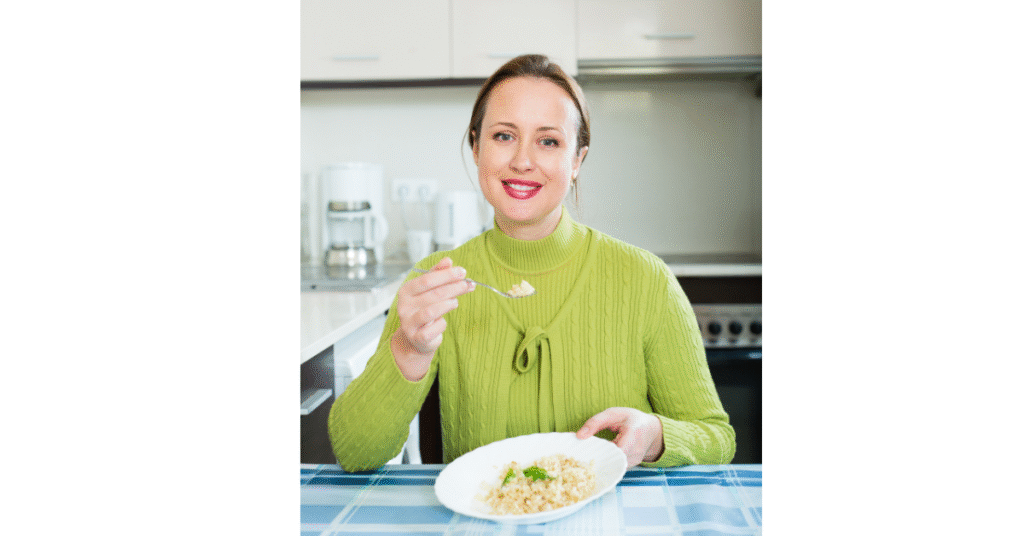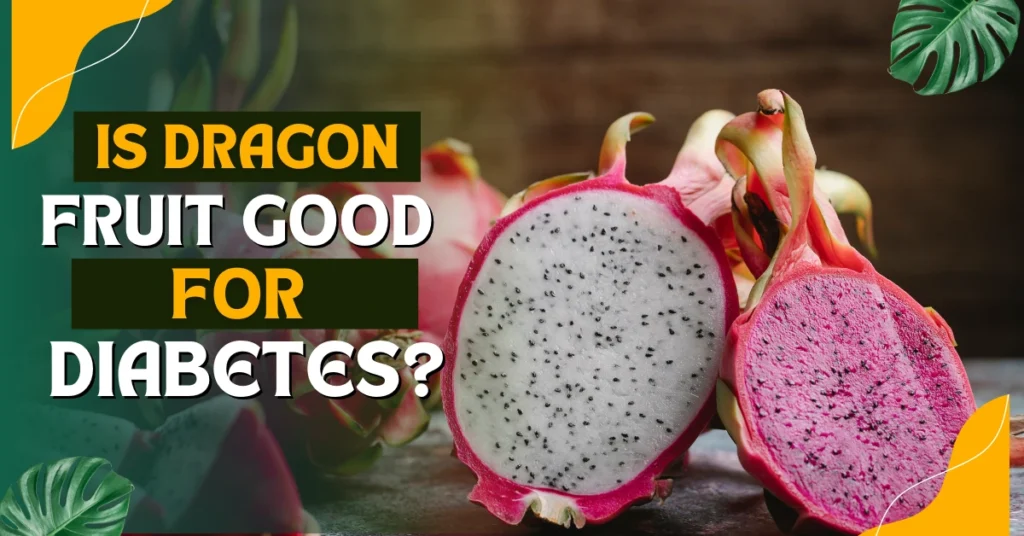Managing diabetes means making smart food choices, especially when it comes to carbohydrates. One of the most common questions people ask is, “Can diabetics eat rice?” The answer is yes—with the right type, portion size, and preparation method, rice can be part of a healthy, diabetes-friendly diet.
In this detailed guide, we’re going to take a closer look at rice and how various types can affect blood sugar levels. We’ll discuss which varieties are generally better for you and share some practical tips on how to incorporate rice into a balanced, diabetes-friendly diet. We aim to equip you with the knowledge you need to make smart choices and enjoy your meals without any unnecessary stress.
The General Consensus: Understanding Carbohydrates and Diabetes
Rice is mainly known for being a food packed with carbohydrates. When we consume carbs, our bodies convert them into glucose (sugar), which then makes its way into our bloodstream. For those living with diabetes, the challenge is that their bodies either don’t produce enough insulin or struggle to use it effectively, resulting in higher blood sugar levels.
But don’t worry, this doesn’t mean you have to avoid all carbohydrates. It’s more about choosing complex carbs that are high in fiber and digest slowly, while also being mindful of portion sizes for all carb-containing foods. Refined carbs, like white rice, tend to be digested quickly, which can cause those pesky spikes in blood sugar.
Understanding Glycemic Index (GI) and Glycemic Load (GL)
To make smart rice choices, it’s helpful to understand two key terms:
- Glycemic Index (GI): This measures how quickly a carbohydrate-containing food raises blood sugar levels after eating. Foods are ranked on a scale of 0-100:
- Low GI: 55 or less (e.g., most vegetables, legumes, whole grains)
- Medium GI: 56-69 (e.g., some fruits, whole-wheat bread)
- High GI: 70 or more (e.g., white bread, sugary drinks, some white rice)
- Glycemic Load (GL): This provides a more complete picture by considering both the GI and the amount of carbohydrates in a typical serving. A food might have a high GI but a low GL if you eat a very small portion.
- Low GL: 10 or less
- Medium GL: 11-19
- High GL: 20 or more
For diabetics, foods with lower GI and GL values are generally preferred because they lead to a slower, steadier rise in blood sugar.

Best Rice Types for Diabetics: Which One Should You Choose?
Let’s break down the most common types of rice and how they stack up for diabetes management:
| Rice Type | GI Score | Fiber | Best For Diabetics? |
|---|---|---|---|
| White Rice | 70–90 | Low | ❌ No (except small amounts) |
| Brown Rice | ~50–55 | High | ✅ Yes |
| Wild Rice | ~45 | High | ✅ Excellent |
| Black Rice | ~42–55 | Medium | ✅ Excellent |
| Red Rice | ~55 | Medium | ✅ Good |
| Basmati (Brown) | ~45–50 | Medium | ✅ Yes |
| Parboiled Rice | ~50–60 | Low | ✅ Better than white |
1. White Rice (Long-Grain, Short-Grain, Jasmine)
- Nutritional Profile (per 1 cup cooked, enriched): ~205 calories, 45g carbs, 0.6g fiber, 4g protein. Often enriched with B vitamins and iron.
- Glycemic Index (GI): Typically high GI (70-75 for long-grain, up to 90 for sticky rice).
- Why it’s a concern: White rice has had its bran and germ removed, stripping away most of its fiber, vitamins, and minerals. This refining process makes it quickly digestible, leading to rapid blood sugar spikes.
- Jasmine Rice: While aromatic and popular, it generally has a high GI (around 60-80), similar to other white rices.
2. Brown Rice
- Nutritional Profile (per 1 cup cooked): ~216 calories, 45g carbs, 3.5g fiber, 5g protein. Rich in magnesium, manganese, selenium, and B vitamins.
- Glycemic Index (GI): Medium GI (around 50-55).
- Why it’s a better choice: Brown rice is a whole grain, meaning it retains the bran and germ. This significantly boosts its fiber content, which slows down carbohydrate digestion and absorption, leading to a more gradual rise in blood sugar compared to white rice. Its higher magnesium content is also beneficial for insulin sensitivity.
3. Basmati Rice (White & Brown)
- Nutritional Profile (per 1 cup cooked): Similar to white or brown rice, depending on whether it’s refined or whole.
- Glycemic Index (GI): Generally lower than other white rices (White Basmati: 50-58; Brown Basmati: 45-50).
- Why it’s a good option: Basmati rice, especially the brown variety, often has a lower GI than other white rice types due to its specific starch composition (higher amylose content). This means it’s digested more slowly. Aged basmati rice is also noted for its lower GI.
4. Wild Rice
- Nutritional Profile (per 1 cup cooked): ~166 calories, 35g carbs, 3g fiber, 6.5g protein. Rich in antioxidants, magnesium, phosphorus, and B vitamins.
- Glycemic Index (GI): Low GI (around 45).
- Why it’s an excellent choice: Despite its name, wild rice isn’t true rice but a type of aquatic grass seed. It boasts an impressive nutritional profile, being higher in protein and fiber than most rice varieties. Its low GI makes it a very favorable option for managing blood sugar.
5. Black Rice (Forbidden Rice)
- Nutritional Profile (per 1 cup cooked): ~160 calories, 34g carbs, 3g fiber, 5g protein. Packed with antioxidants, particularly anthocyanins (which give it its dark color), iron, and zinc.
- Glycemic Index (GI): Low to Medium GI (around 42-55).
- Why it’s a top contender: Black rice is a nutritional powerhouse. Its rich anthocyanin content offers powerful antioxidant and anti-inflammatory benefits, which can be particularly helpful for diabetes complications. Its fiber and protein content also contribute to better blood sugar control.
6. Red Rice
- Nutritional Profile (per 1 cup cooked): Similar to brown rice. Rich in anthocyanins (for its reddish hue), iron, calcium, and selenium.
- Glycemic Index (GI): Medium GI (around 55).
- Why it’s beneficial: Like black rice, red rice contains beneficial anthocyanin antioxidants. Its fiber content aids digestion and helps slow down glucose absorption, making it a better choice than white rice.
7. Parboiled Rice (Converted Rice)
- Nutritional Profile: Similar to white rice, but the parboiling process pushes some nutrients from the bran into the kernel.
- Glycemic Index (GI): Medium GI (around 50-60).
- Why it’s a surprising option: Parboiling involves soaking, steaming, and drying rice before milling. This process gelatinizes the starch, making it less easily digestible and resulting in a lower GI compared to regular white rice. If white rice is your preference, parboiled is a significantly better alternative.
Which Rice Type is Best for Diabetics?
Based on their nutritional profiles and glycemic impact, here are the best rice types for individuals with diabetes:
- Brown Rice: The most accessible and widely recommended due to its fiber and magnesium content, leading to a steady blood sugar response.
- Wild Rice: An excellent choice for its high protein, fiber, and low GI.
- Black Rice: A superfood option, rich in antioxidants and offering good fiber and protein.
- Red Rice: Similar to black rice in its antioxidant benefits and decent fiber content.
- Brown Basmati Rice: A flavorful low-GI option, especially if you prefer the texture of basmati.
- Parboiled Rice: The best white rice alternative if you struggle to transition to whole grains, as it has a lower GI than regular white rice.
Key Strategies for Eating Rice with Diabetes (Beyond Type of Rice)
Choosing the right type of rice is just one part of the equation. How you prepare and combine your rice can significantly impact its effect on your blood sugar.
1. Portion Control is Paramount
Even the best rice types can raise blood sugar if consumed in large quantities.
- Guideline: Aim for a serving size of 1/3 to 1/2 cup (cooked), especially when first incorporating it into your diet.
- Resistant starch behaves more like the Plate Method: A fantastic tool recommended by the American Diabetes Association (ADA):
- Fill half your plate with non-starchy vegetables (broccoli, leafy greens, peppers).
- Fill one-quarter with lean protein (chicken, fish, tofu, beans).
- Fill the remaining one-quarter with complex carbohydrates like your chosen rice.
2. Pair with Protein, Fiber, and Healthy Fats
Never eat rice on its own if you have diabetes. Pairing it strategically can slow down digestion and prevent blood sugar spikes:
- Lean Protein: Chicken, fish, tofu, lentils, or beans eaten with rice will slow gastric emptying.
- Plenty of Non-Starchy Vegetables: The fiber from vegetables (e.g., a large serving of stir-fried veggies, a generous salad) significantly blunts the blood sugar response from rice.
- Healthy Fats: A drizzle of olive oil, avocado, or a few nuts alongside your meal can also help slow glucose absorption.
3. The Magic of Resistant Starch (Cooling & Reheating)
This is a game-changer!
- The Science: When starchy foods like rice are cooked and then cooled (especially for several hours in the refrigerator), some of their digestible starches convert into resistant starch. Resistant starch behaves more like fiber; it resists digestion in the small intestine and ferments in the large intestine.
- Why it matters: This process lowers the rice’s GI, resulting in a steadier blood sugar response.. Reheating the cooled rice can further enhance this effect.
- Practical Tip: Cook a larger batch of your preferred rice, cool it completely in the refrigerator, and then portion and reheat as needed.
4. Cooking Methods Matter
- Rinsing: Rinsing rice thoroughly before cooking can remove some surface starch, potentially reducing its glycemic impact slightly.
- Al Dente: Cooking rice “al dente” (slightly firm) rather than mushy can make it less digestible, leading to a slower rise in blood sugar.
- Adding Acidity: A splash of vinegar or lemon juice to your cooked rice (e.g., in a salad) can also help lower its glycemic response.
5. Monitor Your Blood Sugar
The most effective way to understand how rice (or any food) affects your body is to monitor your blood sugar levels before and two hours after eating. This personalized data can help you fine-tune your portion sizes and choices.
FAQ
Can diabetics eat white rice at all?
While generally discouraged due to its high GI, it’s possible to eat small, controlled portions very occasionally, especially if paired with plenty of protein, fiber, and healthy fats, and if it’s cooled and reheated. However, it’s not the ideal choice for regular consumption.
Is brown basmati rice good for diabetics?
Yes, brown basmati rice is considered a very good option. It combines the benefits of whole grain brown rice with the lower GI characteristic of basmati, making it a favorable choice.
How much rice can a diabetic eat?
A typical recommended serving size is 1/3 to 1/2 cup cooked. However, individual needs vary based on activity level, medication, and overall diet. Always monitor your blood sugar to find your ideal portion.
Does cooling and reheating rice help with blood sugar?
Yes! This process increases resistant starch, which is digested more slowly and acts similarly to fiber, leading to a lower and more gradual rise in blood sugar compared to freshly cooked rice.
Final words
The great news is that people with diabetes don’t have to completely cut rice out of their diets. By choosing the right types of rice—like brown, wild, black, red, or parboiled—and being mindful about portion sizes, along with smart cooking and pairing techniques, you can still enjoy rice as part of a healthy, balanced meal.
Keep in mind that everyone’s body reacts differently to food. It’s important to listen to how your body responds and to consult with your healthcare provider or a registered dietitian for personalized dietary advice that fits your unique needs and health goals.




